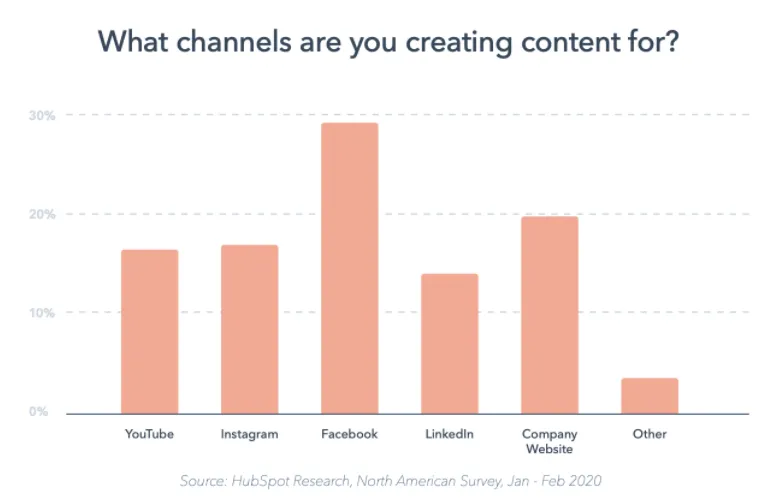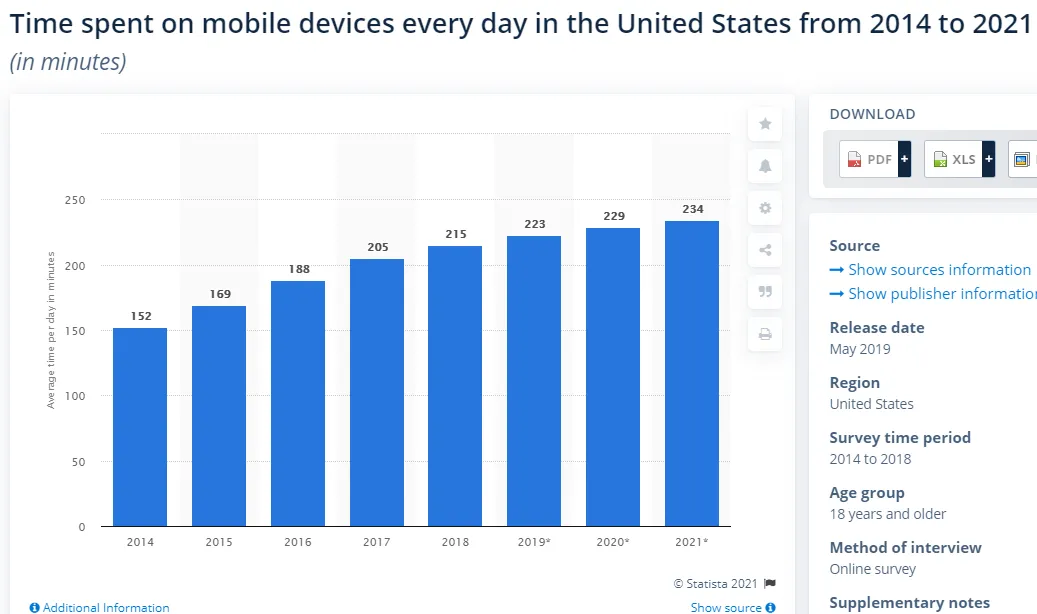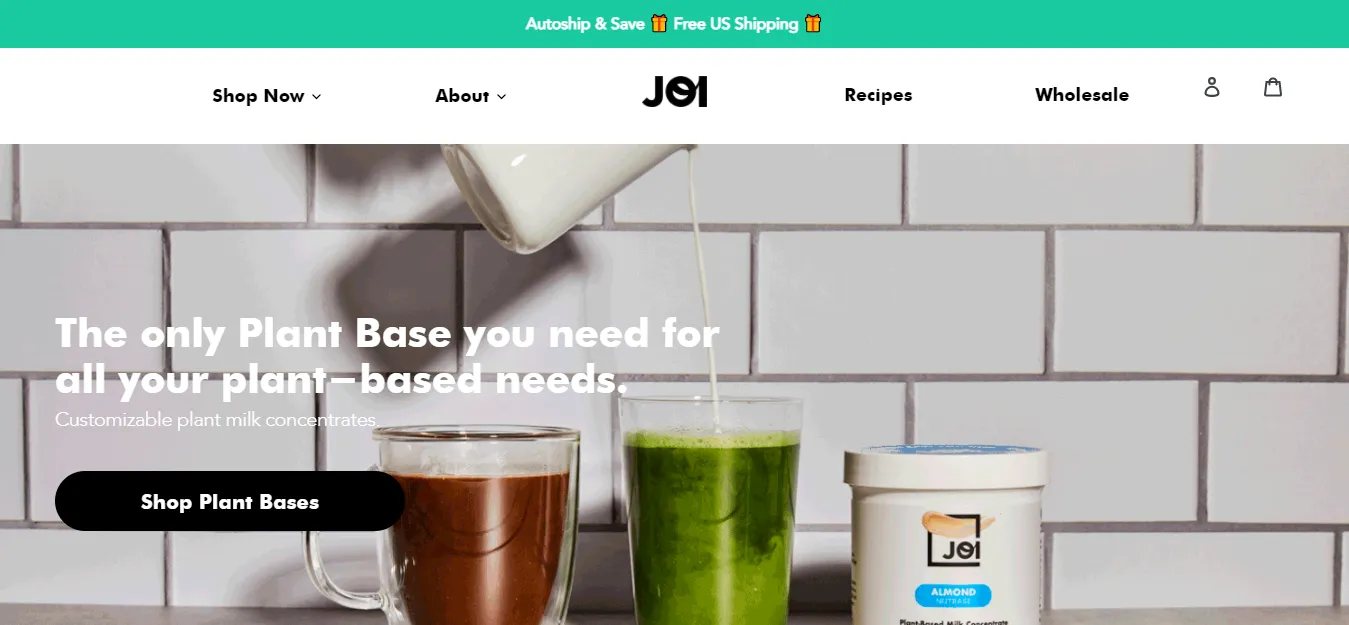How to Scale Content Marketing: Building a System for Growth
Blog: The Process Street Blog

Brad Smith is the CEO at Wordable and the founder of Codeless (a content production agency). His content has been highlighted by The New York Times, Business Insider, The Next Web, and thousands more.
So, you’re ready to scale your marketing efforts, eh?
You’re not the only one: 70% of marketers are taking content marketing seriously — and sooner or later, they start scaling up, increasing competition in the process.
With all the marketing noise out there, it can be difficult to position yourself as an industry leader. But don’t worry, we’re here to help.
In this Process Street post, we’ll cover:
How to prepare a scalable content marketing system
Before scaling your content marketing system, you should consider the following four factors:
Factor #1: Growing your operational capacity internally vs. externally
You can’t scale content marketing without taking a hard look at your internal and external capacity.
Internal and external capacity both refer to resources (people, processes, and tools), but internal capacity refers to in-house resources you can leverage to hit your goals, while external capacity refers to outside resources you can hire or purchase to hit your goals.
It’s important to make sure that you have adequate resources like a killer staff, strategic processes, and reliable digital tools.
Factor #2: Streamlining content workflows and writing processes
Creating workflows and writing processes are crucial for speeding up article completion, improving quality, and enabling your team members to work more independently.
Here are some tips to help:
- Segment your content by topics.
- Create outline templates for each topic theme.
- Use a Work OS or productivity platform to manage/assign work.
- Create checklist templates — or just use ours because they’re amazing.
- Require team members to complete checklists before submitting work.
Content is only as good as its processes and workflows — you HAVE to be process-driven for this whole scaling thing to work.
Factor #3: Utilizing powerful automation tools
The automation industry is expected to generate about 200 billion U.S. dollars worldwide in 2021.
Utilizing powerful automation tools is one of the easiest ways to save time and money on mundane tasks so that your team can focus on more meaningful work and business growth.
Use automation tools to:
- Schedule workflows;
- Assign workflows;
- Stay on top of due dates;
- Send reminders;
- Manage requests;
- Approve budgets and campaigns;
- Receive project updates;
- And so much more!
What’s the point of having brilliant bots around if we’re not going to use them to become even more awesome?
Factor #4: Maintaining a positive ROI
Consistently having a negative ROI (return on investment) is one of the fastest ways for your business to plummet.
When investing or purchasing, ask yourself the following questions:
- Am I going to get three times the ROI?
- Will it decrease costs or time?
- Will it reduce risk by three times?
- How soon can I expect an ROI?
- Who and what will this investment affect the most?
If your answer to the first three questions is no, and if you’re unhappy with the answers to questions four and five, then you may want to reconsider your investment to maintain a positive ROI.
9 actionable steps to effectively scale
Follow these nine best practices to effectively scale:
1. Invest in building a high-performing content team
The most important thing you must have to scale is a high-performing content team.
To build a truly awesome team, you’ll need:
- Seasoned B2B and B2C writers to research, outline, and draft content.
- Account managers to organize, assign, and turn in topics.
- Associate editors, managing editors, and editorial directors to edit and oversee edits.
- Content strategists and consultants to formulate, implement, and advise strategies.
- Operations directors to manage backend planning and oversee content operations.
- Quality assurance specialists to make sure quality is up to par.
- Marketing managers to oversee and run marketing campaigns.
- Executive assistants to help with everything else.
If you don’t have the budget or workload to justify hiring a whole team, consider using freelancers. If you don’t have anything for them to work on, you don’t have to worry about paying them.
2. Understand your audience and business goals
Get clear on your audience by answering the following questions:
- Do you have one target market or multiple target markets?
- Are your audiences lumped together or segmented?
- What questions do your audiences typically ask?
- What are their pain points?
- What do they need?
- What do they want?
- Where do they live?
- What do they do for work?
Get clear on your business goals by asking the following questions:
- Where do I want to see growth or change?
- How can I scale my marketing efforts without going over budget?
- Do I want to scale my own content or provide content for B2B and/or B2C clients?
- What’s missing in my business?
Once you’ve gotten that down, decide which strategies you need to implement to reach your goals.
For example, Swagbucks knows its audience wants information about the best deals, discounts, and coupons, so it has created loads of resources like the one below around that premise.

They also created an affiliate program to help spread the word and hit their business goals.
Note: If you’re still feeling stuck, don’t be afraid to hire an experienced business consultant to help you.
3. Develop a solid content calendar
All right, now that you’ve got an amazing team and you’re clear on both audience and business goals, it’s time to develop a solid content calendar.
Here’s how:
- Make a list of relevant topics according to your audience and goals.
- Use an AI platform and content planning tool like MarketMuse to research topics and optimize content.
- Use a content calendar template and your topics to fill out your content calendar. Be sure to provide as much detail as possible like date and time to post, relevant handles, links, researched hashtags, assigned writer, etc.
PS: You’ll love our Social Media Content Calendar Process Template loaded with workflow automation features.
- Double-check your proposed posts and get approval from a superior, your clients, and/or your content planning team and editorial director to make sure everything looks good (and your clients are happy).
- Schedule your approved posts and use tools to help you (like blog posts and social media scheduling tools). If your clients handle scheduling on their own, use a workflow automation to send them complete content.

Voila! You’re good to go.
4. Enhance your SEO strategy
More than 63% of companies actively invest time in SEO strategies — and for good reason.
Enhancing your SEO strategy helps your content rank high on Google.
For example, by optimizing its website (especially their homepage) with the right targeted keywords, LFA is now the first organic result to appear on Google when searching for ‘capsule fillers company.’

Here are some tips to enhance your SEO strategy:
- Use an SEO tool like MarketMuse or Clearscope: Make sure you’re exceeding the target score on any given topic using an advanced and proven tool.
- Optimize everything your brand touches: This includes your website, landing pages, social media handles, blogs, articles, etc.
- Go beyond keywords with SEO strategies: Use link-building strategies, researched hashtags, and topic clusters to achieve SEO dominance.

Bonus tip: Don’t forget to stay on top of SEO changes and updates so you can please the Google gods.
5. Audit your existing content
One of the worst mistakes is posting content and then never looking back at it again.
Conducting a yearly content audit can ensure that your content never becomes stale or irrelevant.
Conducting an audit can be a full-blown project on its own, but here are some tips on how to get it done the right way.
First, take an inventory of all of your existing content by using a crawling tool like Screaming Frog or URL Profiler. Download its data as a CSV file by choosing ‘export’ when it’s finished crawling and use a spreadsheet to organize its data.
Next, answer the following questions:
- Is the content optimized, timely, and evergreen?
- What’s missing?
- Which content is performing the best?
- What topics do your audience most connect to?
- Which posts are no longer relevant?
Next, decide on some content goals and design a strategy for your existing content using the information you collected.
For an in-depth explanation, check out this article.
6. Diversify your content options
Publications, clients, writers, and audiences have their own preferences on content. Some prefer videos, while others want easily digestible infographics.
And you know what else? They’re bored of the same plain content!
Here are some ways to diversify your content:
- Draw on emotion to connect deeper with audiences (don’t just focus on typical how-to’s and listicles).
- Tell untold stories that encourage inclusivity (think about underrepresented groups).
- Create long-form content (2k words and up).
- Use positive customer experience videos to demonstrate your brand’s value. Here’s an example from Skillcrush:
- Use guest posts and interviews to build your brand, increase credibility, build links, and reach new audiences.
- Host a podcast show to show brand authority — but make sure you’re consistent.
- Use creative visuals like infographics, digital illustrations, quotes, gifographics (animated infographics), GIFs, memes, screenshots, photos, and SlideShare presentations.
- Repurpose old (best-performing) content to make scaling efforts less taxing.
- Leverage User-Generated Content (UGC) to boost social proof and build trust.
- Create polls, contests, and quizzes to get to know your audiences better and increase engagement.

Diversifying your content options is a genius way to increase engagement, reach new markets, diversify your traffic, and build brand loyalty.
7. Determine your content marketing KPIs
KPIs help you determine whether or not your business and content marketing efforts are working.
To determine your content marketing KPIs, first, refer to your business goals.
Next, split your metrics into three groups: Business KPIs, On-site KPIs, and Off-site KPIs.
For Business KPIs, consider measuring:
- Content customer lifetime value (CLTV);
- Content revenue;
- Number of content customers;
- Content ROI;
- Content CAC.
For off-site KPIs, consider measuring:
- Content shares;
- Content impressions/views;
- Content clicks;
- Content click-through rate (CTR).
Track these per channel if you want to get super detailed.
And for on-site KPIs, consider measuring:
- Number of content leads;
- Content conversion rate (CR);
- Content CTR;
- Content drop-off rate and exit rate;
- Time on the content page;
- Content pages per session;
- Content visitors — new and returning.
Feel free to measure anything else that’s relevant (newsletter subscribers, book downloads, etc.)
Keep in mind that some KPIs will be more telling than others. For example, PandaDoc focuses on measuring CTRs and content drop-off rates related to its blog posts.
8. Increase your promotional budget
Money doesn’t create more problems; it creates more opportunities — so get your accountant or a spreadsheet and figure out how to make more room in your promotional budget.
Increasing your promotional budget can:
- Give your brand a competitive edge;
- Help you learn more about your audience;
- Allow you to be more innovative and creative;
- And increase sales and customer retention.
To make the most out of your promotional budget, consider focusing your marketing efforts in just a few areas.
For example, choose two social media channels to focus on instead of six, and pay for advertising instead of focusing on organic posts.

Here are some other tips:
- Invest in email marketing (and get rid of direct mail — it’s too expensive).
- Get creative with visual content.
- Increase your AdWords budget.
- Spend more time on social media (chat with customers, leave and reply to comments, conduct live videos, etc.)
- Invest in online PR.
- Increase your networking efforts.
- Use buddy marketing.
- Start an affiliate program.
If you don’t pay to play the marketing game, it’s harder to win profit rewards.
9. Optimize content for mobile devices
People are spending more time on mobile devices every day — which means if you’re not optimizing content for mobile, you’re in big trouble.

According to Statista, U.S. adults spent an average of 3 hours and 35 minutes every day on a mobile device in 2018.
Look at how Joi, a plant-based milk company, looks on both devices:
Here’s the desktop version:

And here’s the mobile version:

Now that you’ve gotten the visual idea, here’s how to optimize for mobile:
- Optimize videos to make them compatible with smart devices.
- Make content scrollable.
- Use only high-quality and closely cropped images.
- Make sure all buttons are easy to use.
- Use short paragraphs.
- Make popular content easy to find.
- Use accelerated mobile pages (AMP) to create fast mobile experiences.
To stop people from leaving your website and online pages in a hurry, make sure everything regarding your brand is optimized for mobile devices.
How to scale content marketing: Final thoughts
In this article, we’ve covered four factors to consider when scaling your marketing:
- Growing your operational capacity.
- Streamlining workflows.
- Utilizing automation.
- Maintaining a positive ROI.
And we’ve covered 9 best practices to effectively scale:
- Invest in building a high-performing team.
- Understand your audience and business goals.
- Develop a solid content calendar.
- Enhance your SEO strategy.
- Audit your existing content.
- Diversify your content options.
- Determine your marketing KPIs.
- Increase your promotional budget.
- Optimize content for mobile devices.
And that’s it!
Ready to get started on implementing these? We’re here to help.
Have you successfully scaled your content marketing? What tips would you recommend? Let us know in the comments below! 
The post Blog first appeared on Process Street | Checklist, Workflow and SOP Software.

